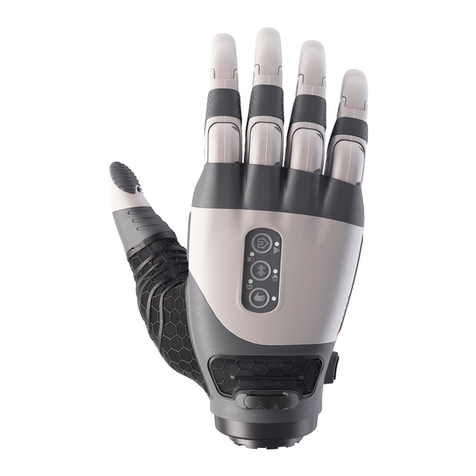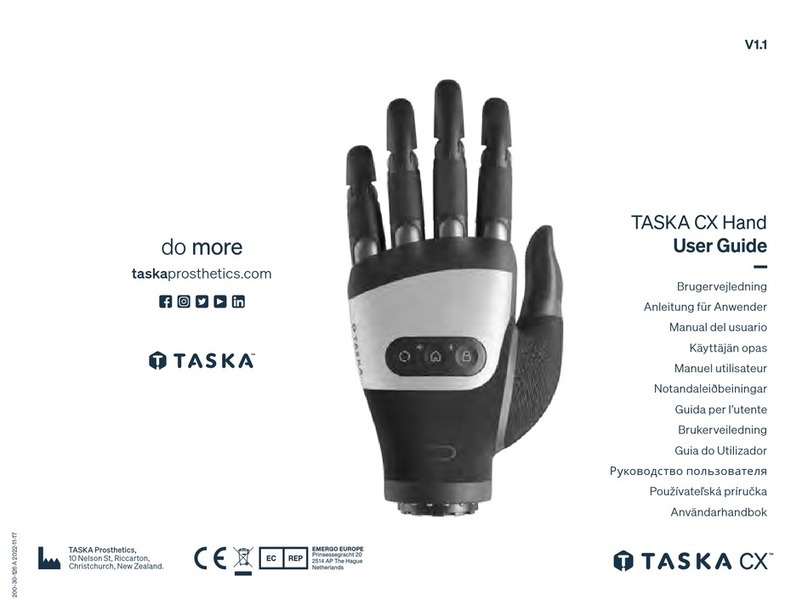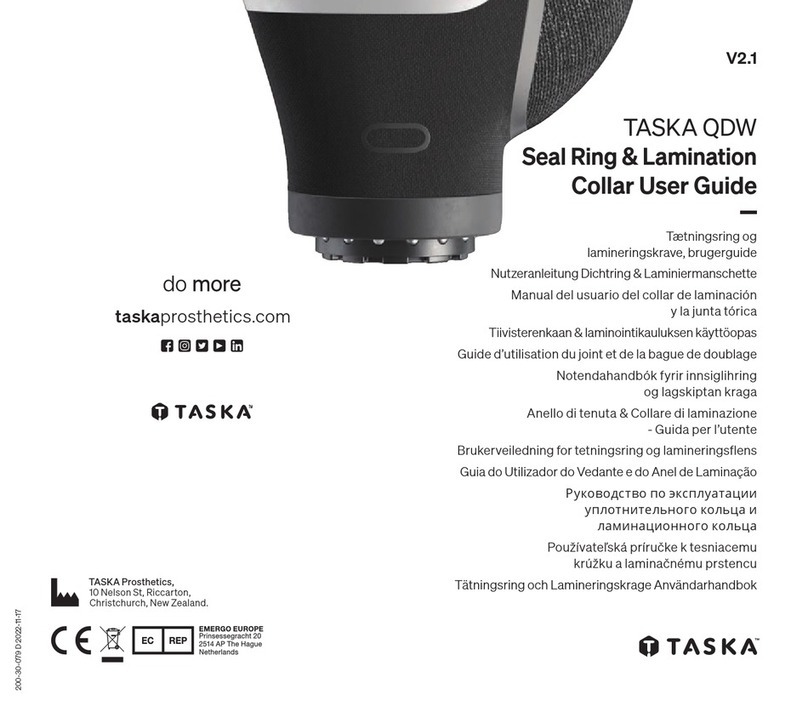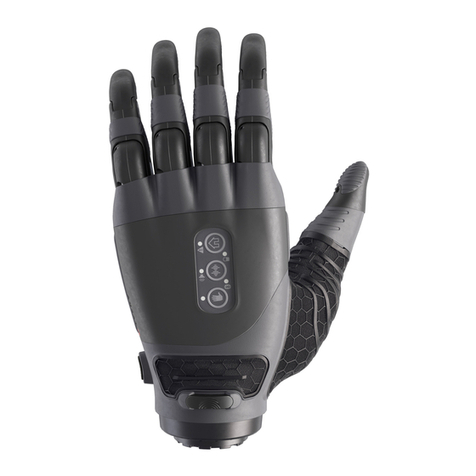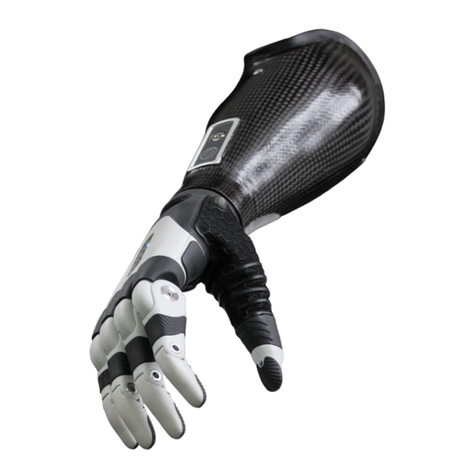
Weight
You may use your TASKA Hand to hold weight up to 20 kg.
Dirt and dust
Fine dust is not able to get into your TASKA Hand, so you may use it in very dirty
and dusty places. However, do not let it come into contact with coarse or rough grit
such as sand.
Avoid mud, oils, and other kinds of dirt that could stain or discolour the hand.
If you need to use the hand in these environments, you should wear a glove or
wash the hand as soon as possible afterwards.
Chemicals
Do not expose your TASKA Hand to corrosive substances such as solvents, acids,
alkalis, strong detergents, industrial chemicals, and any substances that are
harmful to human skin.
Washing your TASKA Hand
Clean your TASKA Hand regularly only using water, soft soap, or light disinfectant
to wash the hand. Harsh chemicals may damage the hand.
Always wash your TASKA Hand after using it in situations that could make
it dirty. Clean the hand before using it to eat, prepare food, or treat injuries.
Safety precautions when using your TASKA Hand
When using your TASKA Hand:
Contact your clinician if something is wrong with your hand.
Do not try to repair or modify the hand yourself. Dismantling of your TASKA
Hand beyond removal of defined user replaceable components by anyone not
authorised by TASKA Prosthetics will invalidate the warranty of your TASKA Hand.
Do not expose the hand to hazards that would injure a natural hand, for example:
• heavy impact
• rapid vibration
• explosions
• corrosive chemicals
• dangerous machinery.
Make sure the hand is turned off before you attach or remove it from the socket.
Do not use your TASKA Hand in a way that could cause a safety hazard.
Do not rely on the anti-slip feature to prevent losing hold of objects.
Do not use your TASKA Hand for holding anything that could cause harm
if dropped, such as a heavy or fragile object or container holding a
hazardous substance.
Do not rely solely on your TASKA Hand to support your weight, or as the primary
means to prevent a fall.
Do not use your TASKA Hand where a flammable liquid or gas is present.
Use your TASKA Hand carefully to avoid injuring people or damaging objects.
do more
Appropriate Use Guidelines 109Appropriate Use Guidelines






